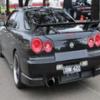What If I Leave The Car Of For 2 Months
Announcements
-
Similar Content
-
Latest Posts
-
By TurboTapin · Posted
If you're really into oil, here's a youtube channel I watch a fair bit. It's literally just about motor oil haha The Motor Oil Geek - YouTube -
By TurboTapin · Posted
I've also heard good things about the Mazworks. Does it center the shifter properly like milling the bell housing does? The serial 9 shifter takes some time to get use to. It's hard to blame the shifter though, by design 5 and 6 on a CD009 are very close to 3rd and forth. It's very easy to shift into 3rd instead of 5th. -
By TurboTapin · Posted
I had the same issue come up on the weekend. It was a pain to push the new stopper back in!
-






Recommended Posts
Create an account or sign in to comment
You need to be a member in order to leave a comment
Create an account
Sign up for a new account in our community. It's easy!
Register a new accountSign in
Already have an account? Sign in here.
Sign In Now